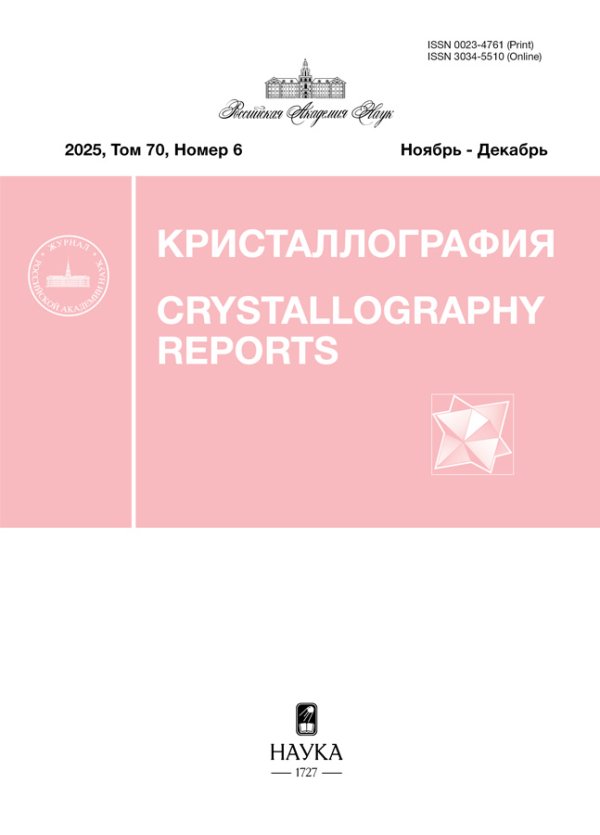The Structure of the Hfq Protein from Chromobacterium haemolyticum Revealed a New Variant of Regulation of RNA Binding with the Protein
- Authors: Lekontseva N.V.1, Nikulin A.D.1
-
Affiliations:
- Institute of Protein Research, Russian Academy of Sciences, Pushchino, Moscow oblast, Russia
- Issue: Vol 68, No 6 (2023)
- Pages: 907-913
- Section: STRUCTURE OF MACROMOLECULAR COMPOUNDS
- URL: https://journals.rcsi.science/0023-4761/article/view/231826
- DOI: https://doi.org/10.31857/S0023476123700339
- EDN: https://elibrary.ru/FVWDIA
- ID: 231826
Cite item
Full Text
Abstract
The structure of the Hfq protein from the bacterium Chromobacterium haemolyticum, which forms crystals in two different spatial groups, has been determined. In both cases, the protein has a specific quaternary hexamer-ring structure. The obtained structure showed a previously undescribed interaction between the C-terminal unstructured part of Hfq and the amino acid residues of the proximal RNA-binding site of the protein. This contact may contribute to the regulation of the binding of RNA molecules to the Hfq protein.
About the authors
N. V. Lekontseva
Institute of Protein Research, Russian Academy of Sciences, Pushchino, Moscow oblast, Russia
Email: nikulin@vega.protres.ru
Россия, Пущино
A. D. Nikulin
Institute of Protein Research, Russian Academy of Sciences, Pushchino, Moscow oblast, Russia
Author for correspondence.
Email: nikulin@vega.protres.ru
Россия, Пущино
References
- Jørgensen M.G., Pettersen J.S., Kallipolitis B.H. // Biochim. Biophys. Acta – Gene Regul. Mech. 2020. V. 1863. P. 194504. https://doi.org/10.1016/j.bbagrm.2020.194504
- Holmqvist E., Wagner G.H. // Biochem. Soc. Trans. 2017. V. 45. P. 1203. https://doi.org/10.1042/BST20160363
- Dutta T., Srivastava S. // Gene. 2018. V. 656. P. 60. https://doi.org/10.1016/j.gene.2018.02.068
- Wagner E.G.H., Romby P. // Adv. Genet. 2015. V. 90. P. 133. https://doi.org/10.1016/bs.adgen.2015.05.001
- Pecoraro V., Rosina A., Polacek N. // Non-Coding RNA. 2022. V. 8. P. 22. https://doi.org/10.3390/ncrna8020022
- Miyakoshi M. et al. // Mol. Microbiol. 2022. V. 117. P. 160. https://doi.org/10.1111/mmi.14814
- Antoine L. et al. // Genes (Basel). 2021. V. 12. P. 1125. https://doi.org/10.3390/genes12081125
- dos Santos R.F., Arraiano C.M., Andrade J.M. // Curr. Genet. 2019. V. 65. P. 1313. https://doi.org/10.1007/s00294-019-00990-y
- Stenum T.S., Holmqvist E. // Mol. Microbiol. 2022. V. 117. P. 4. https://doi.org/10.1111/mmi.14785
- Katsuya-Gaviria K. et al. // RNA Biol. 2022. V. 19. P. 419. https://doi.org/10.1080/15476286.2022.2048565
- Woodson S.A., Panja S., Santiago-Frangos A. // Microbiol. Spectr. / Ed. Storz G., Papenfort K. 2018. V. 6. https://doi.org/10.1128/microbiolspec.RWR-0026-2018
- Updegrove T.B., Zhang A., Storz G. // Curr. Opin. Microbiol. 2016. V. 30. P. 133. https://doi.org/10.1016/j.mib.2016.02.003
- Murina V., Lekontseva N., Nikulin A. // Acta Cryst. D. 2013. V. 69. P. 1504. https://doi.org/10.1107/S090744491301010X
- Park S. et al. // Elife. 2021. V. 10. P. 1. https://doi.org/10.7554/eLife.64207
- Kavita K., de Mets F., Gottesman S. // Curr. Opin. Microbiol. 2018. V. 42. P. 53. https://doi.org/10.1016/j.mib.2017.10.014
- Schu D.J. et al. // EMBO J. 2015. V. 34. P. 2557. https://doi.org/10.15252/embj.201591569
- Santiago-Frangos A. et al. // Proc. Natl. Acad. Sci. U. S. A. 2019. V. 166. P. 10978. https://doi.org/10.1073/pnas.1814428116
- Kavita K. et al. // Nucl. Acids Res. 2022. V. 50. P. 1718. https://doi.org/10.1093/nar/gkac017
- Santiago-Frangos A. et al. // Proc. Natl. Acad. Sci. U. S. A. 2016. V. 113. P. E6089. https://doi.org/10.1073/pnas.1613053113
- Han X.Y., Han F.S., Segal J. // Int. J. Syst. Evol. Microbiol. 2008. V. 58. P. 1398. https://doi.org/10.1099/ijs.0.64681-0
- Lima-Bittencourt C.I. et al. // BMC Microbiol. 2007. V. 7. P. 58. https://doi.org/10.1186/1471-2180-7-58
- Takenaka R. et al. // Jpn. J. Infect. Dis. 2015. V. 68. P. 526. https://doi.org/10.7883/yoken.JJID.2014.285
- Okada M. et al. // BMC Infect. Dis. 2013. V. 13. P. 406. https://doi.org/10.1186/1471-2334-13-406
- Tanpowpong P., Charoenmuang R., Apiwattanakul N. // Pediatr. Int. 2014. V. 56. P. 615. https://doi.org/10.1111/ped.12301
- Teixeira P. et al. // Mol. Genet. Genomics. 2020. V. 295. P. 1001. https://doi.org/10.1007/S00438-020-01676-8
- Winn M.D. et al. // Acta Cryst. D. 2011. V. 67. P. 235. https://doi.org/10.1107/S0907444910045749
- McCoy A.J. et al. // J. Appl. Cryst. 2007. V. 40. P. 658. https://doi.org/10.1107/S0021889807021206
- Afonine P. V et al. // Acta Cryst. D. 2012. V. 68. P. 352. https://doi.org/10.1107/S0907444912001308
- Emsley P. et al. // Acta Cryst. D. 2010. V. 66. P. 486. https://doi.org/10.1107/S0907444910007493
- Wang W. et al. // Genes Dev. 2011. V. 25. P. 2106. https://doi.org/10.1101/gad.16746011.2004
- Santiago-Frangos A., Woodson S.A. // Wiley Interdiscip. Rev. RNA. 2018. V. 9. P. e1475. https://doi.org/10.1002/wrna.1475
- Sonnleitner E. et al. // Biochem. Biophys. Res. Commun. 2004. V. 323. P. 1017. https://doi.org/10.1016/j.bbrc.2004.08.190
- Vecerek B. et al. // Nucl. Acids Res. 2008. V. 36. P. 133. https://doi.org/10.1093/nar/gkm985
- Panja S. et al. // J. Mol. Biol. 2015. V. 427. P. 3491. https://doi.org/10.1016/j.jmb.2015.07.010
Supplementary files













